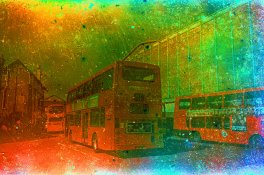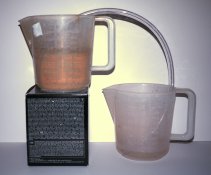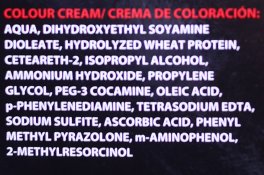Alan Johnson
Subscriber
- Joined
- Nov 16, 2004
- Messages
- 3,285
This is loosely based on Dignan's 2 bath with the CD-4 replaced by PPD from hair dye.
http://silent1.home.netcom.com/Photography/Dilutions and Times.html#2-bath_C-41
Agfaphoto Vista 200 was exposed at EI=50 and processed as follows (temperature not critical)
Bath A......................5min 40C
Bath B......................6min 36C
Wash, then Bleach.....10min29C
Wash, then fix...........5min 31C
The image was very thin so I repeated all these steps.
There was no improvement, the image is still very thin.
Bath A
Hair dye color cream 2 tubes ~2.4g PPD or 4g/L
Sodium Sulfite .........................1tsp
Sodium Metabisulfite.................1/2 tsp
Water to ................................600ml
Bath B
Sodium carbonate decahydrate....270ml (or monohydrate-Arm&Hammer 120ml)
Iodized salt................................2tsp
Water to.....................................1L
I wonder if there is a way to improve the density of the image or is this a property of PPD?
Thanks
http://silent1.home.netcom.com/Photography/Dilutions and Times.html#2-bath_C-41
Agfaphoto Vista 200 was exposed at EI=50 and processed as follows (temperature not critical)
Bath A......................5min 40C
Bath B......................6min 36C
Wash, then Bleach.....10min29C
Wash, then fix...........5min 31C
The image was very thin so I repeated all these steps.
There was no improvement, the image is still very thin.
Bath A
Hair dye color cream 2 tubes ~2.4g PPD or 4g/L
Sodium Sulfite .........................1tsp
Sodium Metabisulfite.................1/2 tsp
Water to ................................600ml
Bath B
Sodium carbonate decahydrate....270ml (or monohydrate-Arm&Hammer 120ml)
Iodized salt................................2tsp
Water to.....................................1L
I wonder if there is a way to improve the density of the image or is this a property of PPD?
Thanks














